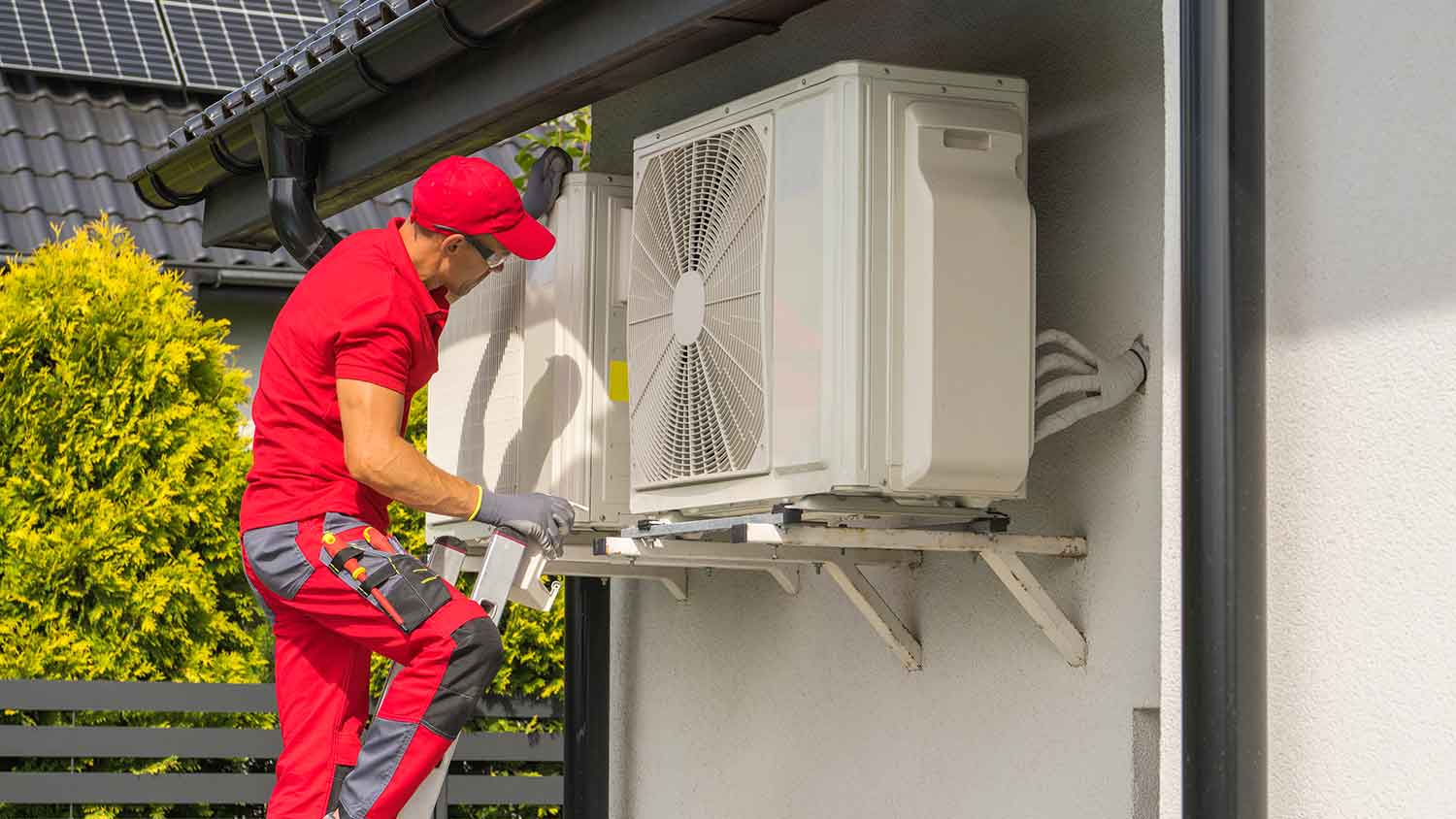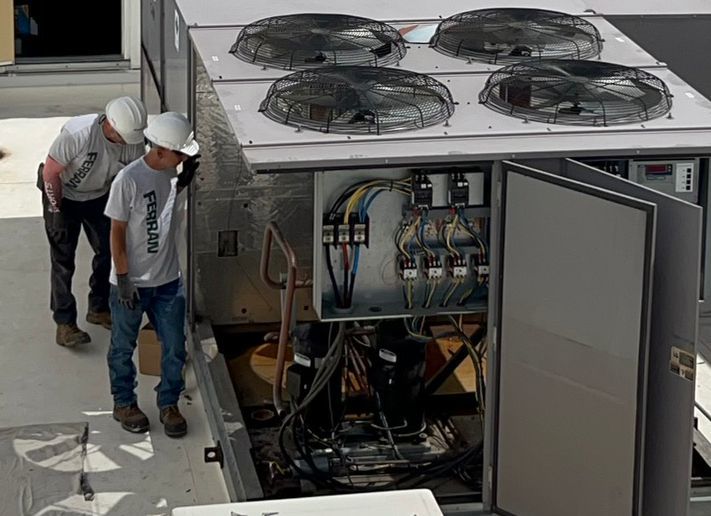Why Choosing a Reliable Brownwood TX HVAC Contractor Is Essential for Your Comfort
The Value of A/c Setup: Trick Factors To Consider for a Comfy Indoor Setting
The setup of an A/c system is a crucial part in attaining an energy-efficient and comfortable indoor atmosphere. Elements such as the suitability of the system for certain building requirements, appropriate sizing to prevent inadequacies, and the proficiency of contractors for a quality installment play crucial duties. The adoption of innovative technologies can dramatically improve system performance.
Picking the Right System

When selecting a heating and cooling system, it is vital to evaluate the capability called for to successfully warm or cool down the room without overworking the system, which can result in raised wear and operational costs. Consulting with a professional heating and cooling professional can provide important understandings right into picking a system that aligns with both the architectural layout and the anticipated use patterns of the building.
In addition, taking into consideration the assimilation of smart modern technology can improve system administration and tracking, using greater control and possible price savings. By meticulously assessing these variables, one can ensure the choice of a cooling and heating system that not just meets immediate needs however additionally contributes to lasting functional sustainability and owner convenience.
Understanding Power Performance
Comprehending energy effectiveness is vital when taking into consideration a Heating and cooling installment, as it directly impacts both the environmental footprint and the functional prices of the system. The efficiency of a Cooling and heating system is normally shown by rankings such as SEER (Seasonal Energy Performance Ratio) for air conditioners or AFUE (Annual Fuel Usage Performance) for heating systems.

Buying an energy-efficient cooling and heating system not just translates to cost savings yet likewise adds positively to environmental preservation by reducing greenhouse gas discharges. Additionally, several territories provide rewards or discounts for the installation of high-efficiency systems, better enhancing their financial charm.
When evaluating power efficiency, think about advanced functions such as variable rate motors, wise thermostats, and zoning abilities. These advancements boost the system's capacity to adapt to differing need, therefore optimizing energy usage. It is vital to speak with HVAC experts who can provide insights into the ideal options tailored to details environment problems and use patterns, making sure maximum efficiency and comfort.
Relevance of Appropriate Sizing

Alternatively, a small HVAC system will battle to get to the preferred temperature, specifically throughout extreme weather problems. This can cause from this source continuous procedure, resulting in greater power prices and potential overheating of system components. In addition, inadequate sizing can bring about inconsistent temperature distribution, causing specific areas of a building to be also trendy or also cozy.
To achieve the proper sizing, a complete lots estimation is vital. This involves analyzing different aspects such as the structure's square footage, insulation levels, window types, and regional climate problems. By properly identifying the home heating and cooling down needs of a room, cooling and heating specialists can recommend systems that ensure efficient operation, minimized energy consumption, and improved interior comfort.

Making Certain High Quality Installment
A smooth cooling and heating setup is the cornerstone of a system's durability and efficiency. Guaranteeing top quality installation involves meticulous attention to information, adherence to sector requirements, and utilizing experienced experts. The procedure starts with choosing a experienced and certified a/c professional. This expert need to possess in-depth knowledge of varied systems and be proficient at assessing the certain demands of the building.
Appropriate installment exceeds simple you could try this out placement of tools. It entails accurate calibration to make sure optimum airflow, reliable power consumption, and uniform temperature level circulation. This includes accurate ductwork setup, ensuring links are safe and leak-free, which is critical for preserving system efficiency and interior air high quality.
Furthermore, the implementation of sophisticated diagnostic devices during installation can discover possible concerns early, avoiding pricey repairs and extending the lifespan of the system. The professional must additionally guarantee that all parts work which the system adheres to regional building regulations and laws.
Regular Maintenance Practices
Once the foundation for a high-performing HVAC system is established via quality setup, the emphasis must shift to regular maintenance methods to ensure continued performance and dependability. Routine upkeep not just expands the life expectancy of the system yet additionally improves indoor air top quality, minimizes power intake, and prevents pricey fixings. Important upkeep jobs consist of frequently altering air filters, cleaning evaporator and condenser coils, and inspecting the system for leaks or clogs.
This basic task can considerably boost air flow and system effectiveness. In addition, professional specialists need to check the system yearly, inspecting for refrigerant a knockout post levels, electric links, and general system efficiency.
Interest to ductwork is likewise important; securing and cleaning up air ducts routinely stops air loss and contamination. Applying an upkeep schedule guarantees that minor problems are resolved prior to they rise, protecting the system's operational stability. By sticking to these upkeep techniques, home owners can optimize their heating and cooling system's performance and preserve a comfortable indoor atmosphere year-round.
Final Thought
By choosing an appropriate system customized to specific structure requirements, recognizing energy effectiveness, and guaranteeing proper sizing, inefficiencies can be decreased. The involvement of knowledgeable professionals warranties high quality installment, while the integration of sophisticated innovations enhances system performance and tracking.
A number of types of Cooling and heating systems are offered, consisting of split systems, hybrid systems, duct-free systems, and packaged heating and air systems, each with distinctive benefits and limitations.
Comprehending energy effectiveness is necessary when thinking about a Cooling and heating installment, as it straight impacts both the ecological impact and the functional expenses of the system. The performance of a Heating and cooling system is commonly indicated by scores such as SEER (Seasonal Energy Performance Proportion) for air conditioners or AFUE (Yearly Fuel Usage Effectiveness) for heating systems (Brownwood TX HVAC Contractor).Once the foundation for a high-performing Heating and cooling system is established with high quality setup, the focus must move to routine maintenance methods to guarantee continued performance and integrity. In addition, specialist service technicians need to evaluate the system each year, examining for cooling agent levels, electrical connections, and overall system efficiency